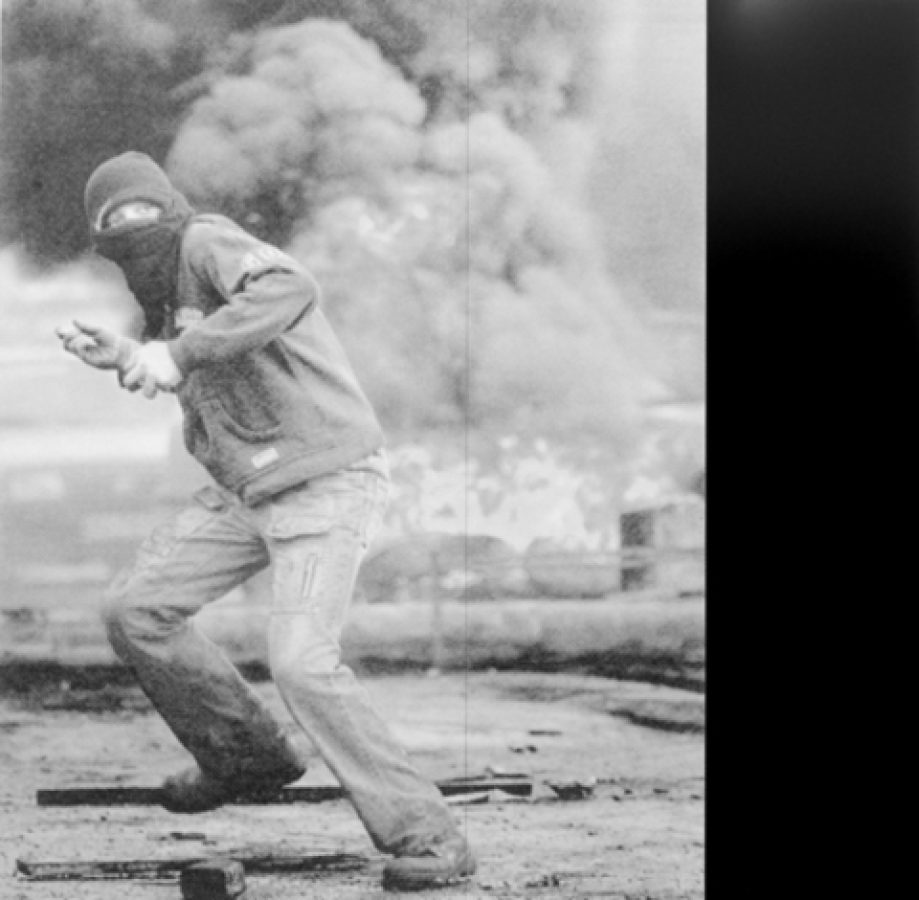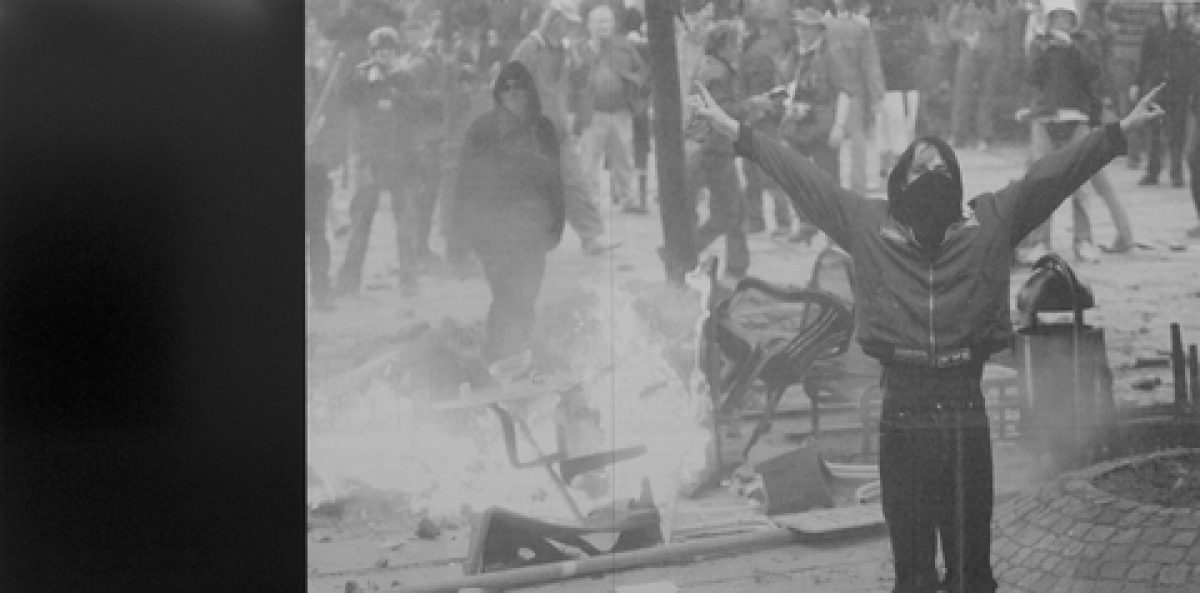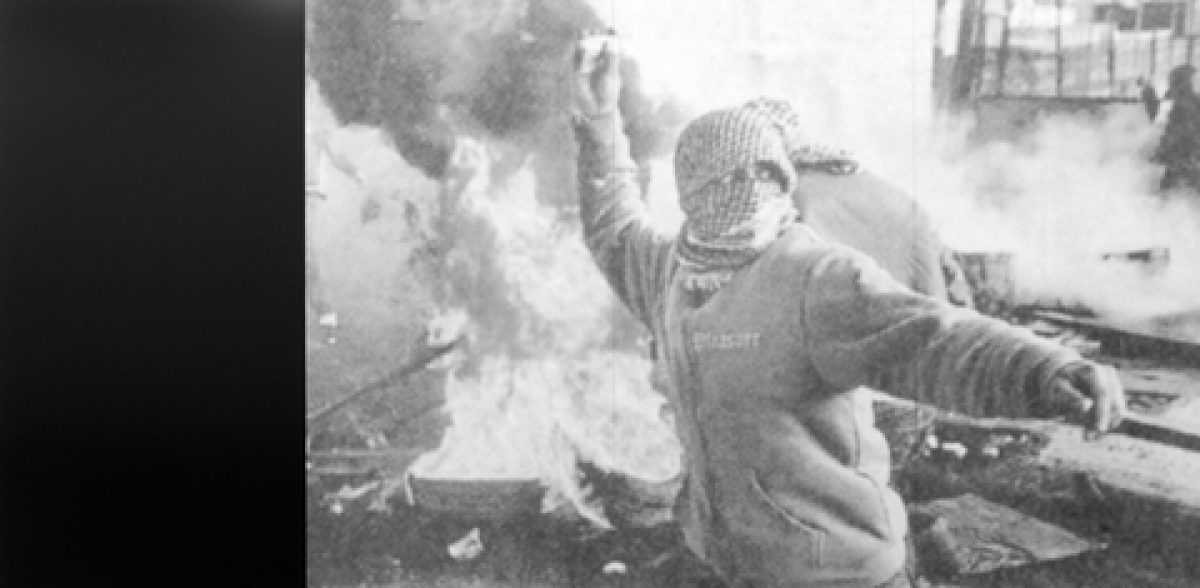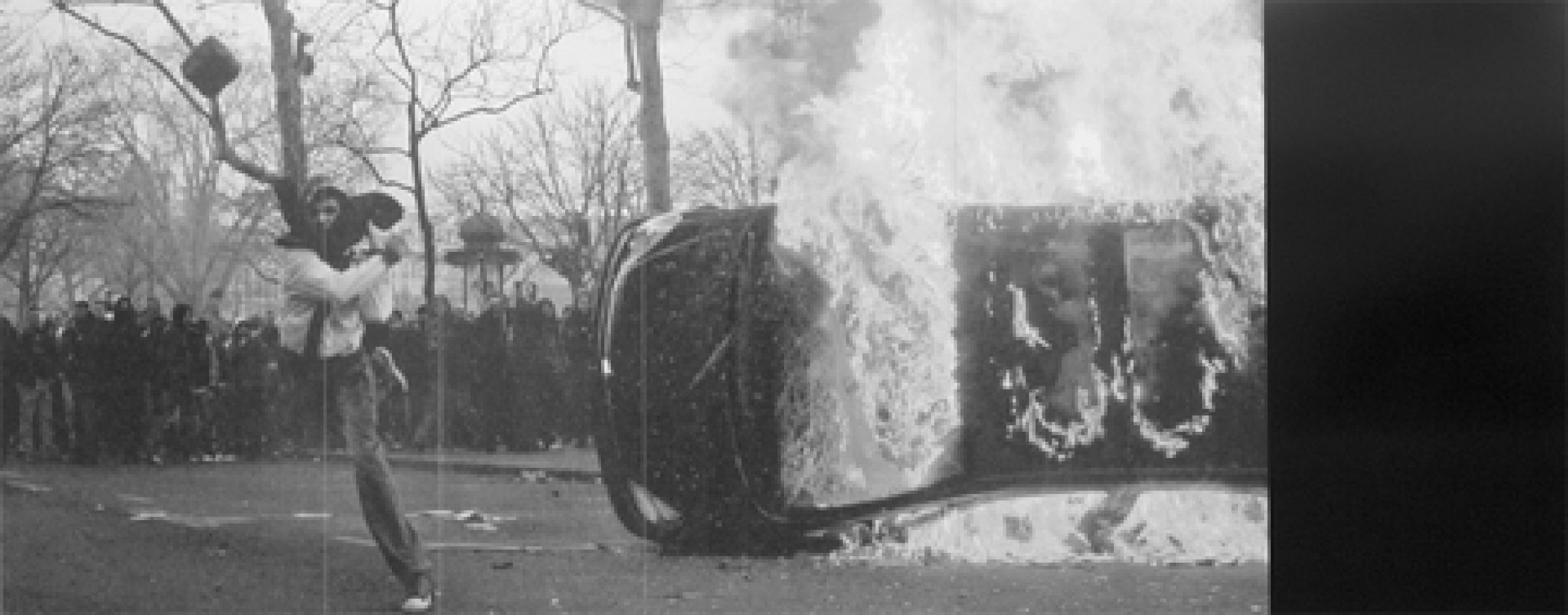| “Unheard music is better than heard” (Greek proverb of late antiquity). “That music be heard is not essential – what it sounds like may not be what it is” (Charles Ives, Essays Before a Sonata). The proposition of Jacques Attali’s Noise is different. He says that while noise is a deadly weapon, silence is death. – David Rattray, How I Became One of the Invisible. Semiotext(e), 1992. The explosive communal act of rioting is most commonly delivered to an audience suspended in the stillness and silence of a photographic image. Noise is not removed in this process, it is almost amplified: the sound and action that deliver this singularly captured moment into existence are infinite, as all things remain while they are imagined, before they are anchored down by express articulation. Photographic representation can easily be accused of subverting the truth of events, not because what is seen in the image has not transpired, but because static images leave so much space around them for multiple narratives to be constructed. The still image is totally contingent on the consciousness that confronts it. By contrast, the near-totality of videos can give too much away… Sourced by Fusinato from print media published in the last few years, these images of rioting all contain an individual clutching a rock, bathed in the refractory glow of a nearby fire. The image has become prototypical, so much so that it lacks the sensation of spontaneity requisite to produce a riot. (Apropos to this predictability, Fusinato would check global newspapers after every forum or conference of global financial authorities, often finding the image he was looking for). Double Infinitives is a succinct allegory for the reluctance to compromise comfort overpowering radical impulses. Conversations suggest this is a conflict frequently experienced by artists. Deprived of a volatile political reality, we experience radicalism through images that act as small ruptures, reminders that the world we live in might be more severely charged than our individual experiences allow. Fusinato’s works flatten these images of volatility onto a smooth slate: they are similar and radiate with the vexed beauty of sameness. A riot is a mad and brutal spectacle, a theatre that is often documented as if it were a play. Hugely expanded in scale and rendered in the suffused gloss of advertising, the real possibility of violence that these works infer deepens the layers of the fiction rather than comprising an indicator of human concern. Those things with which we come into such gentle contact that their thorns barely prick… Liv Barrett, June 2009 |
Marco Fusinato
Double Infinitives
25th June – 25th July 2009
Anna Schwartz Gallery
/
Images

Marco Fusinato
Double Infinitive I, 2009
UV halftone ink on aluminium
250 x 250 cm

Marco Fusinato
Double Infinitive 2, 2009
UV halftone ink on aluminium
250 x 625 cm

Marco Fusinato
Double Infinitive 3, 2009
UV halftone ink on aluminium
250 x 250 cm

Marco Fusinato
Double Infinitive 4, 2009
UV halftone ink on aluminium
250 x 500 cm

Marco Fusinato
Double Infinitive 5, 2009
UV halftone ink on aluminium
250 x 500 cm




